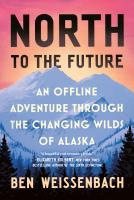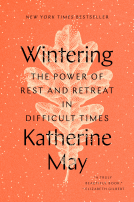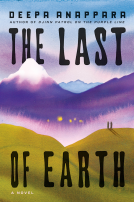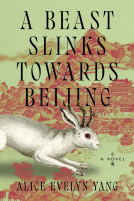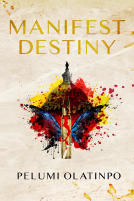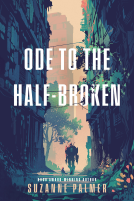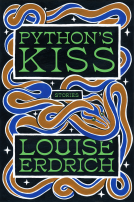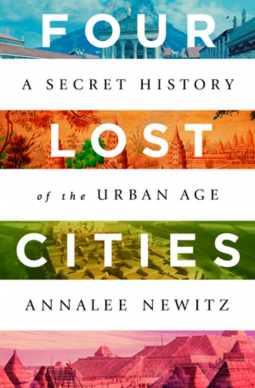
Four Lost Cities
A Secret History of the Urban Age
by Annalee Newitz
This title was previously available on NetGalley and is now archived.
Send NetGalley books directly to your Kindle or Kindle app
1
To read on a Kindle or Kindle app, please add kindle@netgalley.com as an approved email address to receive files in your Amazon account. Click here for step-by-step instructions.
2
Also find your Kindle email address within your Amazon account, and enter it here.
Pub Date Feb 02 2021 | Archive Date Jan 31 2021
Talking about this book? Use #FourLostCities #NetGalley. More hashtag tips!
Description
A quest to explore some of the most spectacular ancient cities in human history—and figure out why people abandoned them.
In Four Lost Cities, acclaimed science journalist Annalee Newitz takes readers on an entertaining and mind-bending adventure into the deep history of urban life. Investigating across the centuries and around the world, Newitz explores the rise and fall of four ancient cities, each the center of a sophisticated civilization: the Neolithic site of Çatalhöyük in Central Turkey, the Roman vacation town of Pompeii on Italy’s southern coast, the medieval megacity of Angkor in Cambodia, and the indigenous metropolis Cahokia, which stood beside the Mississippi River where East St. Louis is today.
Newitz travels to all four sites and investigates the cutting-edge research in archaeology, revealing the mix of environmental changes and political turmoil that doomed these ancient settlements. Tracing the early development of urban planning, Newitz also introduces us to the often anonymous workers—slaves, women, immigrants, and manual laborers—who built these cities and created monuments that lasted millennia.
Four Lost Cities is a journey into the forgotten past, but, foreseeing a future in which the majority of people on Earth will be living in cities, it may also reveal something of our own fate.
About the Author: Annalee Newitz, a contributing opinion writer for the New York Times, is the founder of io9 and former editor-in-chief of Gizmodo. They are the author of Scatter, Adapt, and Remember: How Humans Will Survive a Mass Extinction, and the novels Autonomous and The Future of Another Timeline. Newitz is also the cohost of the Hugo Award-winning podcast Our Opinions Are Correct.
Advance Praise
“Newitz always sees to the heart of complex systems and breaks them down with poetic ferocity.” - N. K. Jemisin, author of the Broken Earth trilogy and The City We Became
“In their fascinating book Four Lost Cities, Annalee Newitz journeys to a quartet of ancient ghost cities, asking not only why they once thrived but why they ultimately vanished. The result is a deeply insightful look at human culture everywhere: inventive, social, resilient, and hauntingly fragile.” - Deborah Blum, Pulitzer Prize–winning author of The Poison Squad
“Annalee Newitz is a brilliant writer with the heart of an archaeologist and the soul of a visionary. Four Lost Cities should open our eyes to all that may happen to our cities in the future. Vibrant and adventurous, this is a necessary book for turbulent times.” - Sarah Parcak, archaeologist and author of Archaeology from Space
“Cheerful, curious, amused, and amusing, Annalee Newitz is a fabulous tour guide through the latest archaeological perspectives on four of humankind’s most remarkable urban experiments. Along the way, Newitz dispels myths, evokes fascinating stories—and makes us think hard about our own urban future.” - Charles Mann, author of 1491 and 1493
“Drawing on four examples from the ancient world, Annalee Newitz gives us clear-eyed insight into how cities never are truly lost; they just change with their times. Newitz takes readers on a journey that reveals as much about the future of cities as it does about our urban past. Beautifully written, Four Lost Cities tells a fascinating tale of disaster and resilience that is welcome in our uncertain era.” - Andrew Lawler, author of The Secret Token
Available Editions
| EDITION | Hardcover |
| ISBN | 9780393652666 |
| PRICE | $26.95 (USD) |
| PAGES | 304 |
Average rating from 22 members
Featured Reviews
We all would’ve learnt about ancient civilisations in history. But what do we really know about them? Why did people abandon those sophisticated civilisations? These may be questions for archeologists, but as a history seeker I’ve always had these questions in mind.
The Four Lost Cities - we follow the exploration of four ancient forgotten civilisations along with the author Annalee Newitz. Newitz explores the rise and fall of four ancient cities, each the center of a sophisticated civilization: the Neolithic site of Çatalhöyük in Central Turkey, the Roman vacation town of Pompeii on Italy’s southern coast, the medieval megacity of Angkor in Cambodia, and the indigenous metropolis Cahokia, which stood beside the Mississippi River where East St. Louis is today.
With fascinating details, archeological insights and rich cultural background, this is how ancient history should be written. Anyone who is interested in history would like this book. The author is a cohost of Hugo award winning podcast Our Opinions are correct! She is the author of Future of another timeline that will interest time travel enthusiast and scifi lovers alike!!
Thank you Netgalley & publisher for the eARC in exchange for an honest opinion!
 Educator 505105
Educator 505105
A rich, heavily textured book. The first section, on the Neolithic Çatalhöyük, was particularly interesting to me: what archaeology and anthropology reveal about the way people lived when they first began to live together in a settled way. The details of the burials - keeping dead family close, under your floor - moved me and have stayed with me, although I read this book several months ago. It opened a door into a vanished time and a vanished way of life. Angkor, too, was particularly well-handled and described here. This is an excellent book: the granular detail of scientific discovery is specific but never dry, and without ever taking her feet from the ground or launching into unearned flights of fancy, Newitz manages to show us a great deal about both what was commonly thought about these civilisations, what is now known, and how we know what we know; the process and evidence through which we have learned what life was like in them, and how they came to be. They come back to life.
Readers who liked this book also liked:
Sean Sherman; Kate Nelson; Kristin Donnelly
Cooking, Food & Wine, History, Multicultural Interest
Alice Evelyn Yang
General Fiction (Adult), Literary Fiction, Sci Fi & Fantasy
Pelumi Olatinpo
Essays & Collections, Multicultural Interest, Politics & Current Affairs
